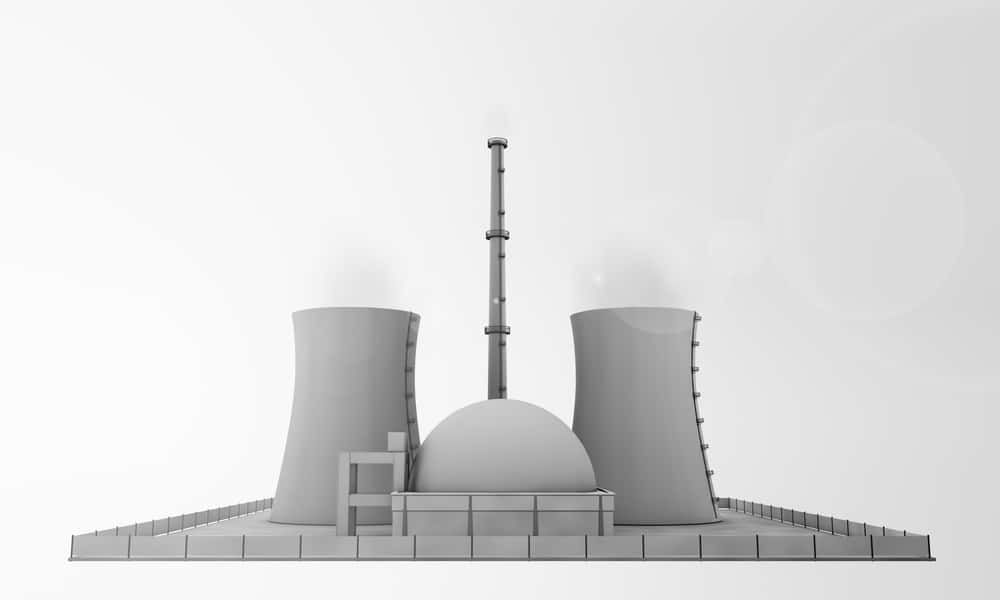No Indonesian market for SMRs
By M.V. Ramana | June 28, 2017

In May 2017, Indonesia’s government announced that Russia’s Rosatom State Atomic Energy Corporation had offered to develop nuclear power plants in Indonesia. But the person making the announcement, Luhut Pandjaitan—the coordinating maritime affairs minister—said he had told them that Indonesia was not ready yet because “we need to raise public awareness, which takes time.”
Saying it “takes time” is an understatement. The country’s National Nuclear Energy Agency, or BATAN as it is known from its acronym in the Indonesian language (Badan Tenaga Nuklir Nasional), was set up in the late 1950s and has been advocating nuclear power for Indonesia ever since. In 1972, BATAN started the process of selecting specific sites for nuclear plants when—in conjunction with the ministry in charge of public works and electricity—it established the Preparatory Commission for Development of a Nuclear Power Plant. That eventually led to various sites being chosen for nuclear plant construction on the Muria Peninsula on Indonesia’s most populated island, Java. But in each case, these efforts were stopped—primarily by local opposition, but partly also because of widespread skepticism about BATAN’s claims about the seismic safety of sites on the peninsula.
BATAN then turned its attention to other locations in the country, but with little success. To date, BATAN has conducted site studies on at least 16 potential locales.
BATAN’s efforts at setting up a nuclear power plant in Indonesia have not gone unnoticed. Many reactor vendors have beaten a path to Jakarta’s doorstep, hoping to sell their wares. The list includes South Korea, France, China and, of course—given its status as the leading reactor vendor in this decade—Russia. In recent years, all these countries’ offers have focused on one specific kind of reactor that BATAN has expressed an interest in: Small Modular Reactors (SMRs).
Why SMRs for Indonesia? Small Modular Reactors have electrical power outputs of less than 300 megawatts. They are being heavily promoted by many countries’ nuclear establishments as having several desirable characteristics when compared to traditional large reactors—in particular, cheaper construction costs per unit, higher safety levels, lower rates of radioactive waste generation, and less likelihood that these reactors and their fuel production facilities could be used to make fissile materials (plutonium or highly enriched uranium) for nuclear weapons. There are no operating SMRs, and it remains to be seen whether any real-world reactor would be built that features any, let alone all, of these characteristics. Indeed, of the different major SMR designs under development, none simultaneously fulfills the key requirements of lower cost, higher safety, less radioactive waste, and reduced opportunity for nuclear weapons proliferation. These are the key problems confronting nuclear power today and constraining its future. It is likely that addressing one or more of these four problems will involve design choices that make some of the other problems worse.
Among the target markets for such reactors are developing countries such as Indonesia. The International Atomic Energy Agency considers SMRs as a good option to electrify “remote regions with less developed infrastructures” because the low-capacity electricity grid that is typical of such areas makes it difficult to introduce a nuclear power plant with large power capacity—say 1,000 megawatts—without destabilizing the grid itself. Indeed, one of the reasons that BATAN claims to be interested in SMRs is that there are many islands in the Indonesian archipelago that require electricity or energy but do not have a high enough level of electrical demand to support the construction of a large nuclear reactor. One of the areas highlighted by BATAN officials as particularly suitable for SMRs is the province of West Kalimantan because its “grid capacity [is]… still limited.” BATAN also suggested that an attractive aspect of SMRs is the lower cost—due in large part to the fact that a small modular reactor will generate only a fraction of the power generated by a large reactor.
Among the SMR designs that have been offered by vendors, and explored by BATAN, are high temperature gas-cooled reactors, submarine-based reactors, floating power plants, and light water reactors.
Who’s in the competition? South Korea was the first to pitch the idea of SMRs to Indonesia: In October 2001, with IAEA approval, BATAN signed an agreement with the Korea Atomic Energy Research Institute to undertake a joint study titled “A preliminary economic feasibility assessment of nuclear desalination in Madura Island.” The Korea Atomic Energy Research Institute had been developing a small modular reactor called the System-Integrated Modular Advanced Reactor since 1996; it had the bonus feature of incorporating additional equipment that could desalinate water in addition to generating electricity.
In the case of China, BATAN signed an agreement with the China Nuclear Engineering Group Corporation in 2016 to jointly develop high temperature gas reactors and train Indonesian professionals to run them—an agreement that resulted from Chinese officials scouting around potential reactor markets.
With France, BATAN signed an agreement with DCNS, a company that has traditionally been involved in a range of naval defense systems but more recently has been developing a submarine-based electricity generating reactor project called Flexblue. (Link in Indonesian.) The idea is to park the submarine on the ocean floor and run a cable from it to land to supply electricity.
Russia, however, has been the most determined suitor. In the mid-2000s, Rosatom proposed a small Russian floating nuclear power plant to supply electricity to Gorontalo province on the Indonesian island of Sulawesi. Rosatom’s floating nuclear power plants are modeled after the reactors that have been used to power a small fleet of Russian nuclear-powered icebreakers for decades. The idea of a civilian floating nuclear power plant project has been around in Russia since the 1990s, but progress has been slow and erratic. China and the United States have also explored the idea of commercial floating nuclear power plants, but the United States abandoned the idea as uneconomical after spending millions of dollars in research and development.
In October 2006, the governor of Gorontalo announced that the province already had an agreement with Russia’s then state-owned Unified Energy System of Russia to buy a floating power plant.
But despite enthusiasm for the proposal from the provincial government, the Indonesian minister of Research and Technology rejected the idea of using a floating nuclear power plant. As Natio Lasman, then-deputy chairman of Indonesia’s nuclear agency and later chair of Indonesia’s Nuclear Regulatory Agency, told the Wall Street Journal: “I don’t want Indonesia to be used as an experiment.”
Public opposition: A major problem. Many problems may afflict nuclear proposals, regardless of whether the building plans are based on SMRs or large reactors. A key challenge has been public acceptance. Because of the potential for catastrophic accidents and the production of long-lived radioactive waste, nuclear power is perceived as a risky technology, and those living near areas selected to house a nuclear plant—such as the Muria Peninsula—often push back.
And apart from local opposition, the unpopularity of nuclear power among the general population nationwide is often a factor in whether a country develops nuclear power. A poll commissioned by the International Atomic Energy Agency in October 2005 found that only 33 percent of those Indonesians questioned felt that nuclear power was safe and that more plants should be built. In comparison, 28 percent felt that nuclear power was dangerous and all plants should be closed—while 31 percent agreed with the “middle opinion” that what was already in place should be used but that no new plants should be constructed. In the case of Indonesia, of course, that middle opinion is in practice the same as the 28 percent who wanted to close all reactors, because there was (and still is) no operating nuclear power plant in the country.
In 2011, an IPSOS poll conducted after the Fukushima nuclear reactor accident in Japan found that two-thirds of the Indonesian population expressed opposition: 33 percent of Indonesians strongly oppose nuclear power while 34 percent were somewhat opposed. About two-thirds of those polled said that their opinion was not influenced by Fukushima.
BATAN, not surprisingly, feels differently. And it has conducted a series of polls that show greater levels of support. But the proof of the pudding is in the eating. Nuclear power continues to be controversial in Indonesia, and there is widespread public opposition. Indeed, in December 2015, when then-Energy and Mineral Resources minister Sudirman Said publicly announced that the government had concluded that “this is not the time to build up nuclear power capacity,” one of his stated reasons for avoiding nuclear power was that he did not want “to raise any controversies.”
So, when people like Luhut Pandjaitan—Indonesia’s coordinating maritime affairs minister—talk about the “need to raise public awareness,” it’s reasonable to ask what they mean. Is raising public awareness really just code for coaxing or bribing the people in some areas to allow the construction of a nuclear power plant? The history of the many attempts to site nuclear reactors in Indonesia shows quite clearly that the public is already aware of the hazards involved in nuclear power. The Indonesian public’s longstanding opposition to nuclear power, especially in areas that have been earmarked for potential construction, include concerns about the security of reactor operations, the reliability of reactor designs, radioactive waste, the potential for nuclear proliferation, Indonesia’s geographical position within the seismically active Pacific Ring of Fire, and the proximity of nuclear sites to seismic faults or volcanoes. Many Indonesians are also concerned about nuclear power’s high economic costs and future dependence on foreign parties for nuclear technology or fuel, and they prefer local renewable energy resources.
Other problems with SMRs. My collaborators at the Indonesian Institute of Energy Economics and at the Nautilus Institute for Security and Sustainability and I recently issued a report that detailed the many challenges that would have to be overcome before any small modular reactors are constructed in Indonesia. These challenges include a lack of support for nuclear power at the highest political levels, the absence of tested SMR designs, and the higher electricity-generation costs of SMR technology. We also identified legislative regulations that could become obstacles for specific SMR technologies such as floating power plants, and the political and regulatory problems with SMR construction plans that involve fabricating the bulk of the reactor at off-site factories.
The cost of electricity generated by SMRs is high compared to large conventional nuclear power plants, and high compared to the range of readily available alternatives in Indonesia. The rapidly declining cost of photovoltaic technology is particularly relevant. Studies testify to the large potential of solar energy in Indonesia, and the government has been adopting policies that promise to accelerate the construction of significant amounts of solar capacity.
The lower power level of SMRs also implies that more reactors would have to be built using this technology to produce the same amount of electricity as a few larger reactors—meaning that planners would have to deal with public resistance at many more sites. Public opposition has played a major role in stopping the construction of nuclear power plants so far; small modular reactors might face even more of controversy.
For small modular reactors, the potential benefits accruing from electricity generation come at a higher economic and social cost than other energy sources would require. As a result, it would seem that the construction of SMRs is unlikely, especially in large enough numbers to make a sizeable contribution to Indonesia’s electricity generation.
Together, we make the world safer.
The Bulletin elevates expert voices above the noise. But as an independent nonprofit organization, our operations depend on the support of readers like you. Help us continue to deliver quality journalism that holds leaders accountable. Your support of our work at any level is important. In return, we promise our coverage will be understandable, influential, vigilant, solution-oriented, and fair-minded. Together we can make a difference.
Topics: Analysis, Nuclear Energy














